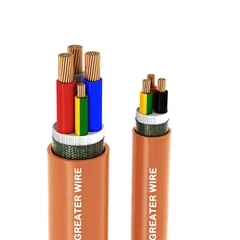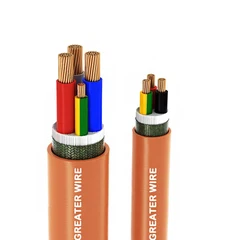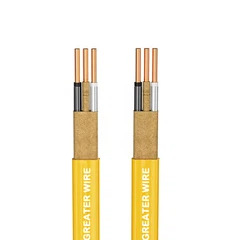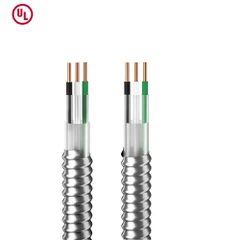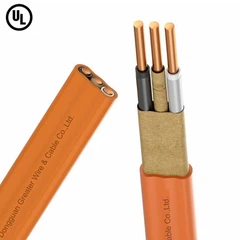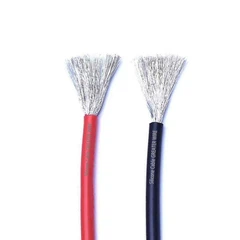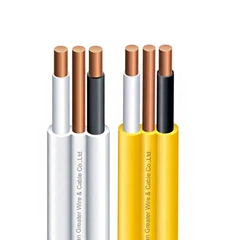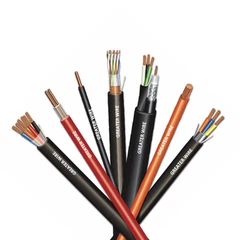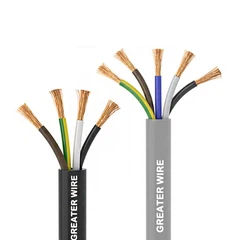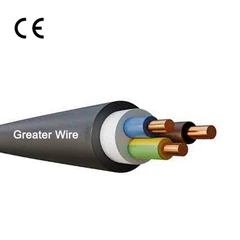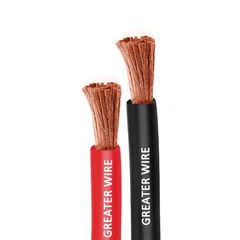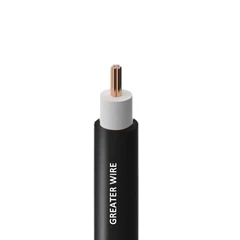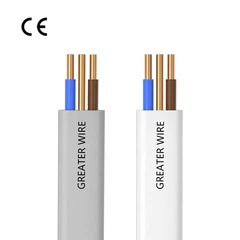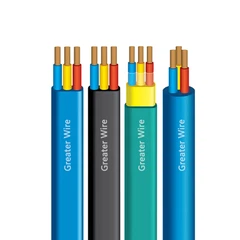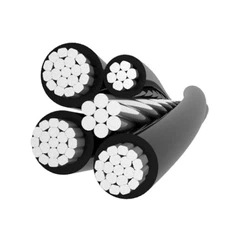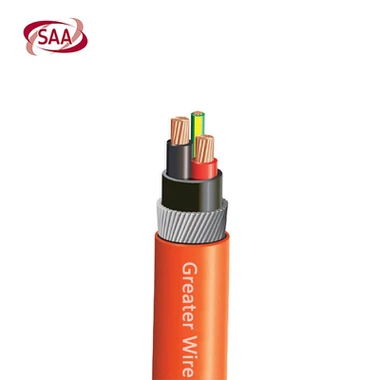Cables come in a variety of colors, each with its specific purpose. Among these, orange cables are commonly used in various industries, particularly in electrical installations and communication systems. The color orange is not chosen arbitrarily; it serves functional, safety, and regulatory purposes. In this article, we will explore the reasons why cables are orange, their applications, and the certifications and standards that govern their use, including the SAA certificate, Australian standards, and the AS/NZS 5000.1 standard. We will also examine the significance of orange circular cables in different industries.
The Significance of Color in Cable Systems
Color-coding cables has long been a practice in the electrical and communications industries. The use of specific colors helps distinguish different types of cables, making it easier to identify their function, reduce the risk of accidents, and facilitate maintenance and repairs. While many cables are typically black, white, or gray, orange cables have become a prominent choice for certain applications, especially in high-voltage or specialized systems.
The color orange is not only vibrant and attention-grabbing but also associated with caution and warning, making it ideal for use in environments where safety is a primary concern. The distinctiveness of orange cables ensures that they are easily identifiable, reducing the chance of confusion with other types of wiring.
Why Are Cables Orange?
Several factors contribute to the widespread use of orange cables. These factors include safety considerations, visibility, industry-specific standards, and the need for specific properties in certain cables. Let's break down these factors in more detail:
1. Safety and Visibility
Orange is a highly visible color, which is a primary reason why cables used in potentially hazardous environments are often orange. In electrical and networking installations, ensuring that cables are easily visible is essential for both safety and maintenance purposes. For example, when dealing with high-voltage cables, technicians need to be able to quickly distinguish them from lower-voltage cables to avoid the risk of accidental electrocution.
Moreover, orange serves as a color that signals caution, making it a natural choice for cables used in situations where extra care is required. Whether the cables are part of electrical distribution systems, industrial machinery, or telecommunications infrastructure, the color ensures that workers are alert to the presence of potentially dangerous systems.
2. Standardization and Regulatory Requirements
In countries like Australia, where strict regulations govern electrical installations and products, the color of cables also helps with adherence to local standards. The use of color-coding helps maintain consistency in installations, making it easier to identify and comply with regulations set by standards organizations. This is particularly important for manufacturers, installers, and engineers who are responsible for ensuring that electrical and communication systems meet the required safety and performance criteria.
Orange cables are often found in specific applications where they need to meet Australian and international standards. In Australia, one of the key standards that govern the use of electrical cables is the AS/NZS 5000.1 standard, which outlines the requirements for cables used in electrical installations.
3. Identification of Specialized Cables
While standard power cables are often black or white, orange cables are used to indicate specialized cables that serve specific functions. For example, orange cables are commonly used for high-voltage electrical systems, which require extra insulation and safety measures. These cables are usually identified as "high-voltage cables" or "specialized industrial cables" and must comply with additional regulatory requirements. By using orange as a color marker, installers and technicians can quickly identify these cables as requiring special handling.
In telecommunications, fiber-optic cables or cables used for networking purposes may also feature orange insulation for easier identification. These specialized cables often have different properties compared to standard copper cables, such as higher bandwidth and faster data transmission capabilities, and are designed to meet specific performance criteria.
The Role of Certification and Standards
Orange cables are not only marked with a distinctive color but must also meet rigorous safety and performance standards. These standards ensure that the cables are safe to use, durable, and capable of performing under specific conditions. For cables in Australia, two key components of this regulatory framework include the SAA certificate and the AS/NZS 5000.1 standard.
1. SAA Certificate: Ensuring Compliance with Australian Standards
The SAA certificate is a mark that certifies that a product meets the safety standards outlined by the Standards Association of Australia (SAA). This certification is particularly important for electrical products, including cables, because it indicates that the product has undergone testing and has been proven to meet the necessary safety criteria.
For orange cables, obtaining the SAA certificate means that the cables are compliant with Australian safety standards and are safe to use in both residential and industrial applications. The testing process for certification includes assessments of electrical performance, fire resistance, insulation integrity, and overall durability. Manufacturers who wish to sell cables in the Australian market must ensure that their products are SAA certified to guarantee compliance and consumer safety.
The SAA certificate is often displayed on cables, packaging, and related documentation to reassure consumers and professionals that the product meets the required standards.
2. Australian Standards: AS/NZS 5000.1 and Electrical Cable Regulations
In Australia and New Zealand, the AS/NZS 5000.1 standard provides detailed specifications for cables used in electrical installations. This standard sets out the requirements for low-voltage power cables, including those used in residential, commercial, and industrial settings. It covers various aspects of cable construction, such as the materials used for insulation, the thickness of the sheath, and the overall performance of the cable.
For orange circular cables used in these types of installations, compliance with AS/NZS 5000.1 ensures that the cables meet high-quality standards for electrical safety and performance. Cables built to this standard are designed to be durable, fire-resistant, and capable of withstanding the stresses of typical electrical installations. For example, cables with orange sheaths may be specifically designed for underground use or for environments where they may be exposed to harsh chemicals or physical damage.
AS/NZS 5000.1 also sets out requirements for cable testing, ensuring that cables meet the necessary safety criteria before they are used in the field. This includes insulation resistance, voltage testing, and fire safety testing. Compliance with this standard helps prevent electrical accidents and ensures that cables perform reliably over time.
3. Circular Cables: A Specialized Form of Orange Cable
While orange cables can come in various forms, one of the most common configurations for high-voltage and specialized cables is the circular design. Circular cables are often used in power distribution and electrical transmission systems because their shape allows for efficient use of space and maximizes the surface area for insulation.
Orange circular cables are used in a variety of applications, particularly in industries where high visibility and reliable performance are critical. The circular design is ideal for applications where cables need to be flexible and able to withstand constant movement or installation in tight spaces. For example, orange circular cables are often used in construction sites, power plants, and industrial equipment where they are exposed to heavy-duty environments.
These cables are built to withstand mechanical stress, temperature variations, and potential hazards in the workplace. They are also designed to offer high-performance electrical transmission, ensuring that power is delivered efficiently and safely. As with other types of orange cables, circular cables must meet the relevant safety and performance standards, including the SAA certificate and AS/NZS 5000.1, to ensure they are safe for use in their respective applications.
Applications of Orange Cables
The applications of orange cables are varied and span across different industries. Here are some of the most common uses:
1. High-Voltage Electrical Systems
Orange cables are frequently used in high-voltage power systems, such as those found in industrial plants, substations, and large-scale electrical distribution networks. The bright color is used to signify the presence of potentially dangerous high-voltage cables, which require special care during installation, maintenance, and repair.
2. Telecommunications and Networking
In telecommunications, orange cables may be used for fiber-optic networks or Ethernet systems. These cables are designed to handle high data transmission speeds and are crucial for providing internet and communication services in commercial, residential, and industrial settings.
3. Underground Installations
In applications where cables are buried underground, orange cables are often preferred because their color makes them easy to locate if they need to be dug up for maintenance or repairs. The added visibility and differentiation from other underground cables help to avoid accidents during excavation.
4. Industrial and Construction Applications
Orange cables are used in industrial and construction environments where heavy-duty power transmission is required. These cables need to be durable and capable of withstanding physical wear, temperature extremes, and exposure to chemicals or other harsh conditions.

